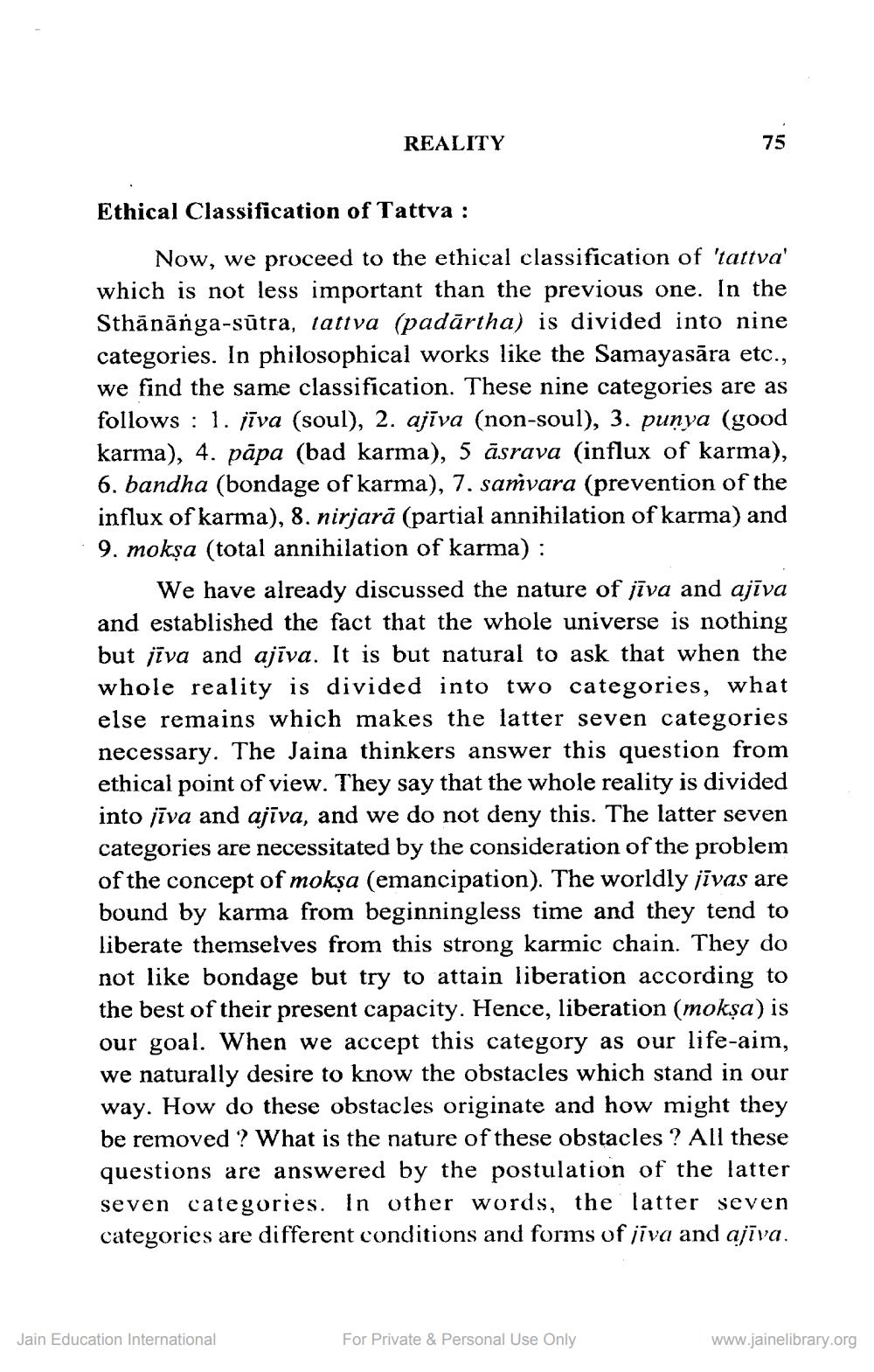________________
REALITY
Ethical Classification of Tattva:
Now, we proceed to the ethical classification of 'tattva' which is not less important than the previous one. In the Sthānanga-sutra, tattva (padartha) is divided into nine categories. In philosophical works like the Samayasara etc., we find the same classification. These nine categories are as follows: 1. jīva (soul), 2. ajīva (non-soul), 3. punya (good karma), 4. pāpa (bad karma), 5 asrava (influx of karma), 6. bandha (bondage of karma), 7. samvara (prevention of the influx of karma), 8. nirjarā (partial annihilation of karma) and 9. mokṣa (total annihilation of karma) :
Jain Education International
75
We have already discussed the nature of jīva and ajīva and established the fact that the whole universe is nothing but jiva and ajīva. It is but natural to ask that when the whole reality is divided into two categories, what else remains which makes the latter seven categories necessary. The Jaina thinkers answer this question from ethical point of view. They say that the whole reality is divided into jīva and ajīva, and we do not deny this. The latter seven categories are necessitated by the consideration of the problem of the concept of mokṣa (emancipation). The worldly jīvas are bound by karma from beginningless time and they tend to liberate themselves from this strong karmic chain. They do not like bondage but try to attain liberation according to the best of their present capacity. Hence, liberation (mokṣa) is our goal. When we accept this category as our life-aim, we naturally desire to know the obstacles which stand in our way. How do these obstacles originate and how might they be removed? What is the nature of these obstacles? All these questions are answered by the postulation of the latter seven categories. In other words, the latter seven categories are different conditions and forms of jiva and ajīva.
For Private & Personal Use Only
www.jainelibrary.org




